Pycnogenol ® has
been hailed as the most potent, natural antioxidant compound ever
"discovered" by science, considered by many health experts to be the
nutritional breakthrough of this century!
Maritime Pine Plus® is the name of the
patented extract of the bark
of the Maritime Pine tree, Pinus maritima that grows along the
Atlantic Coast in the Bordeaux region of France. But its origins go
back to the "New World" and to the First People who
first discovered the miracle of the pines and then shared their wisdom
with a bedraggled crew of Frenchmen who were dying the ugly death we
now call scurvy.
The Anishinabeg who
originally lived along the Atlantic coast began a westward migration along
the St. Lawrence River in about 900 AD. They were searching for "an island
in the shape of a turtle" and the "food that grows on water" described by
one of the Seven Prophets. Some traveled far ahead and might have founded
new tribes or were absorbed into other tribes along with their knowledge.
Still others chose to stop along the way and founded villages along the St.
Lawrence River. As a result the people were scattered from the Atlantic,
along the St. Lawrence River, around the Great Lakes, north to Hudson Bay,
into the prairies of the West, and into the Rocky Mountains.
 Six
hundred years later King Francis I of France commissioned Jacques Cartier to
explore this area to determine if there were exploitable resources to add to
the wealth of France. During his second voyage to the New World in 1535,
Cartier's ship became trapped in the ice of the St. Lawrence River near what
is now Quebec. His crew of 110 men ran out of fresh provisions and became
very ill with scurvy. Twenty-five men died before the local natives,
probably the descendants of the Anishinabeg (see
The Seventh Fire) came to their aid.
Amazed that the light-skinned men in the big boat did not know how to
maintain their health, they served the men a brew extracted from needles and
bark of the Canadian pine trees. Twenty five men had already died and the
rest of the crew, too weak to bury them, had tossed them overboard into the
snow and ice that held the ship fast. Fearful of its contents and skeptical
that the savage could know more than they, the healthier crewmembers
refused to drink the concoction. Only those near death tried the herbal tea
and within days they were well. Then all of the crew drank of the
miraculous potion and regained their health. Even other chronic maladies
were healed. Cartier described the incident in his book about the voyage,
Voyage aux Canada. This, the second discovery of the miracle
of the pines, lay dormant and unrecognized by the professors and doctors of
Western Civilization for over four hundred years.
Six
hundred years later King Francis I of France commissioned Jacques Cartier to
explore this area to determine if there were exploitable resources to add to
the wealth of France. During his second voyage to the New World in 1535,
Cartier's ship became trapped in the ice of the St. Lawrence River near what
is now Quebec. His crew of 110 men ran out of fresh provisions and became
very ill with scurvy. Twenty-five men died before the local natives,
probably the descendants of the Anishinabeg (see
The Seventh Fire) came to their aid.
Amazed that the light-skinned men in the big boat did not know how to
maintain their health, they served the men a brew extracted from needles and
bark of the Canadian pine trees. Twenty five men had already died and the
rest of the crew, too weak to bury them, had tossed them overboard into the
snow and ice that held the ship fast. Fearful of its contents and skeptical
that the savage could know more than they, the healthier crewmembers
refused to drink the concoction. Only those near death tried the herbal tea
and within days they were well. Then all of the crew drank of the
miraculous potion and regained their health. Even other chronic maladies
were healed. Cartier described the incident in his book about the voyage,
Voyage aux Canada. This, the second discovery of the miracle
of the pines, lay dormant and unrecognized by the professors and doctors of
Western Civilization for over four hundred years.
In the 1950's, Jacques
Masquelier, a French biochemist on an assignment as Visiting Professor at
the University of Quebec, discovered Cartier's amazing account and
recognized that the medicine of the native people must have been rich in
bioflavonoids. Professor Masquelier began a search for the active
ingredients, proanthocyanidins. and found a rich source in the bark of the
French maritime pine tree along the Atlantic Ocean from Bordeaux to the
Spanish border.
In 1969, Professor
Masquelier began working for Horphag Research Ltd. to document its amazing
health-giving qualities and non-toxicity, and to find safe methods of
extraction. The US Patent office granted Horphag Research Patent No.
4,698,360 in 1987 for Pycnogenol as a therapeutic agent that acts as a
scavenger of free radicals.
The traditional knowledge
remains among some of the original people who had first discovered the
miracle of the pine. In 1996, a holy man of the Cree in Saskatchewan told
me of the secret his grandfather had told him. It was to be used to bring
health to the people who had diabetes and other diseases. The secret
medicine was made of a tea brewed from pine needles. The first discoverers
had not entirely forgotten. Perhaps it will be remembered, that the miracle
of the pines was a gift to all people and it was discovered by the First
Nations, the Native American people, probably the Anishinabeg, known today
as the Ojibwe, Pottawatomie, and Ottawa.
Now you can purchase
Pycnogenol from Spring Wellness (see ad at right).
Another herbal remedy from
the Ojibwe is Essiac tea. Read more on
Rene Caisse and Essiac
Pycnogenol is the safe,
effective super-antioxidant that helps to relieve many chronic degenerative
disorders.
Click here to Order Pycnogenol
For more information:
White Eagle Soaring: Dream Dancer of the 7th Fire


See
Real Dream Catchers' links
This is a crazy world. What can be
done? Amazingly, we have been mislead. We have been taught that we can
control government by voting. The founder of the Rothschild dynasty, Mayer
Amschel Bauer, told the secret of controlling the government of a nation
over 200 years ago. He said, "Permit me to issue and control the money of
a nation and I care not who makes its laws." Get the picture? Your freedom
hinges first on the nation's banks and money system. That's why we
advocate using the
Liberty Dollar, to understand the
monetary and banking system. Freedom is connected with
Debt Elimination for each individual. Not
only does this end personal debt, it places the people first in line as
creditors to the National Debt ahead of the banks. They don't wish for you
to know this. It has to do with recognizing WHO you really are in
A New Beginning: A Practical Course in Miracles.
You CAN
take
back your power and
stop volunteering to pay taxes to the collection
agency for the BEAST. You can take back that which is yours,
always has been yours and use it to pay off your debts. And you can send
others to these pages to discover what you are discovering.
Disclaimer: The
statements on www.real-dream-catchers.com have not been evaluated by the FDA.
These dream catchers are not intended to diagnose nor treat nor cure any
disease or illness
©
2007,
Allen
Aslan Heart / White Eagle Soaring of the
Little Shell Pembina Band,
a
Treaty
Tribe of the Ojibwe Nation.
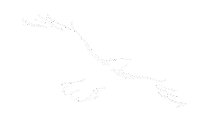
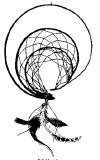
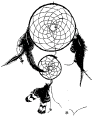
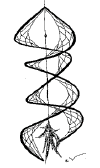

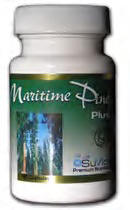

 Get
a course to promote your business online, explode your sales
Get
a course to promote your business online, explode your sales Get
software to promote your business online in less time
Get
software to promote your business online in less time Get
software to streamline your business and run it hands free.
Get
software to streamline your business and run it hands free. Six
hundred years later King Francis I of France commissioned Jacques Cartier to
explore this area to determine if there were exploitable resources to add to
the wealth of France. During his second voyage to the New World in 1535,
Cartier's ship became trapped in the ice of the St. Lawrence River near what
is now Quebec. His crew of 110 men ran out of fresh provisions and became
very ill with scurvy. Twenty-five men died before the local natives,
probably the descendants of the Anishinabeg (see
Six
hundred years later King Francis I of France commissioned Jacques Cartier to
explore this area to determine if there were exploitable resources to add to
the wealth of France. During his second voyage to the New World in 1535,
Cartier's ship became trapped in the ice of the St. Lawrence River near what
is now Quebec. His crew of 110 men ran out of fresh provisions and became
very ill with scurvy. Twenty-five men died before the local natives,
probably the descendants of the Anishinabeg (see
